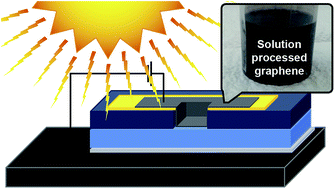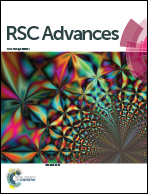Solution processed graphene–silicon Schottky junction solar cells
Abstract
Here, surfactant-assisted exfoliated graphene (SAEG) has been used to make transparent conducting graphene films which for the first time were used to make SAEG–silicon Schottky junctions for photovoltaics. The graphene films were characterised using UV-Vis spectroscopy, Raman spectroscopy, atomic force microscopy and four point probe sheet resistance measurements. The effects of film thickness, thermal annealing and chemical doping of the graphene films on the power conversion efficiency (PCE) of the cells were investigated. Mild annealing of thickness optimised films resulted in a doubling of the PCE. Additionally, chemical doping resulted in a further 300% increase of the peak PCE. These results indicate that SAEG has the potential to compete with chemical vapour deposited graphene in graphene–silicon Schottky junction applications.


 Please wait while we load your content...
Please wait while we load your content...